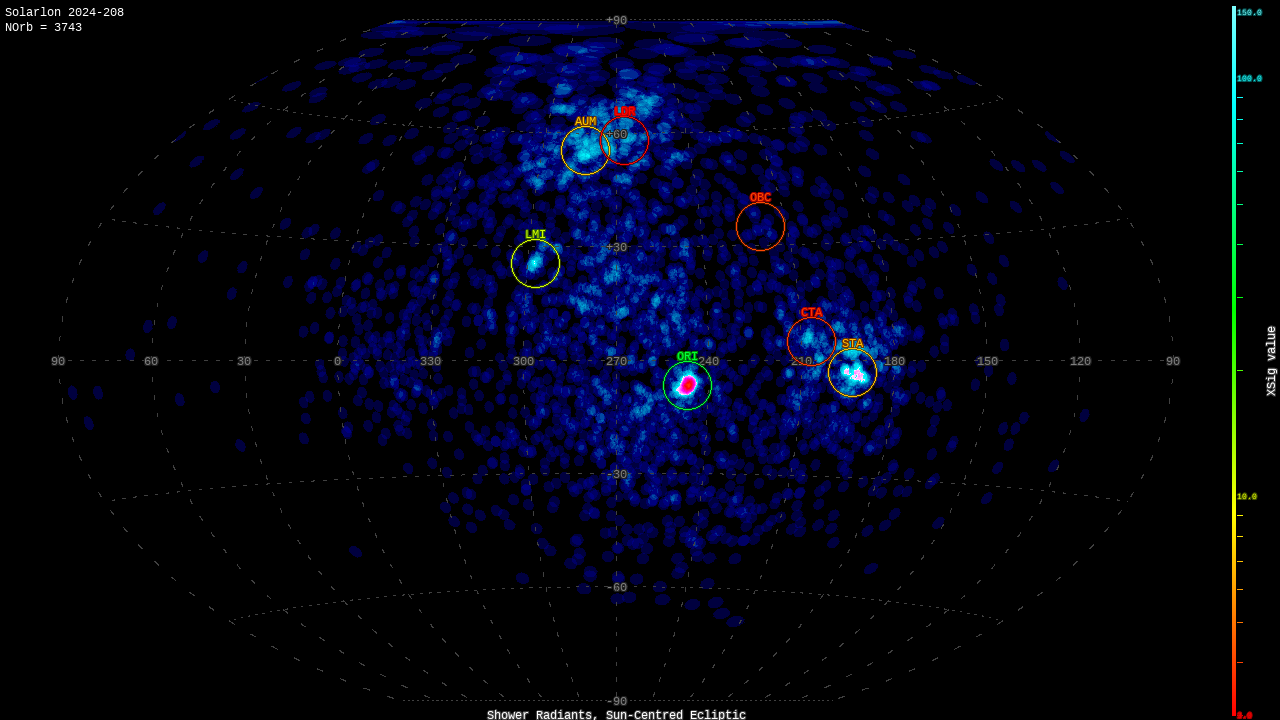Radiants and data
All high-level Global Meteor Network data products (radiants, orbits, magnitudes and masses) are public
and are updated every 6 hours.
The data are released under the CC BY 4.0 license,
so if you are using the data for scientific purposes, we kindly ask you to reference this web site
in your work, as well as the papers in the References section.
You can access the complete data set here: GMN data (documentation)
And all plots here: GMN plots
KML files with fields of view of all stations are here: KML files
Feel free to contact us if you need the data in a different format!
Oh, and here is handy tool for searching the IAU meteor shower data base: IAU search tool
The radiant plots show the latest data and are in Sun-centered ecliptic coordinates. Figure 1 illustrates
the coordinate systems and show example meteoroid orbits. The Earth's apex (direction of motion around the Sun)
is in the center of the plot at 270°, the Sun is left at 0°, and the anti-helion direction is at 180° of Sun-centered
geocentric ecliptic longitude (X-axis on the all-sky radiant plots below). Looking at meteor radiants in these coordinates
is superior to equatorial coordinates as the Earth's motion around the Sun is taken out, so there is very litte radiant drift.

Figure 1. Illustration of the Sun-centered ecliptic coordinate system.
